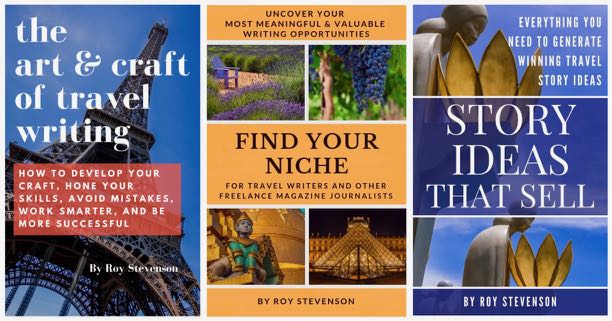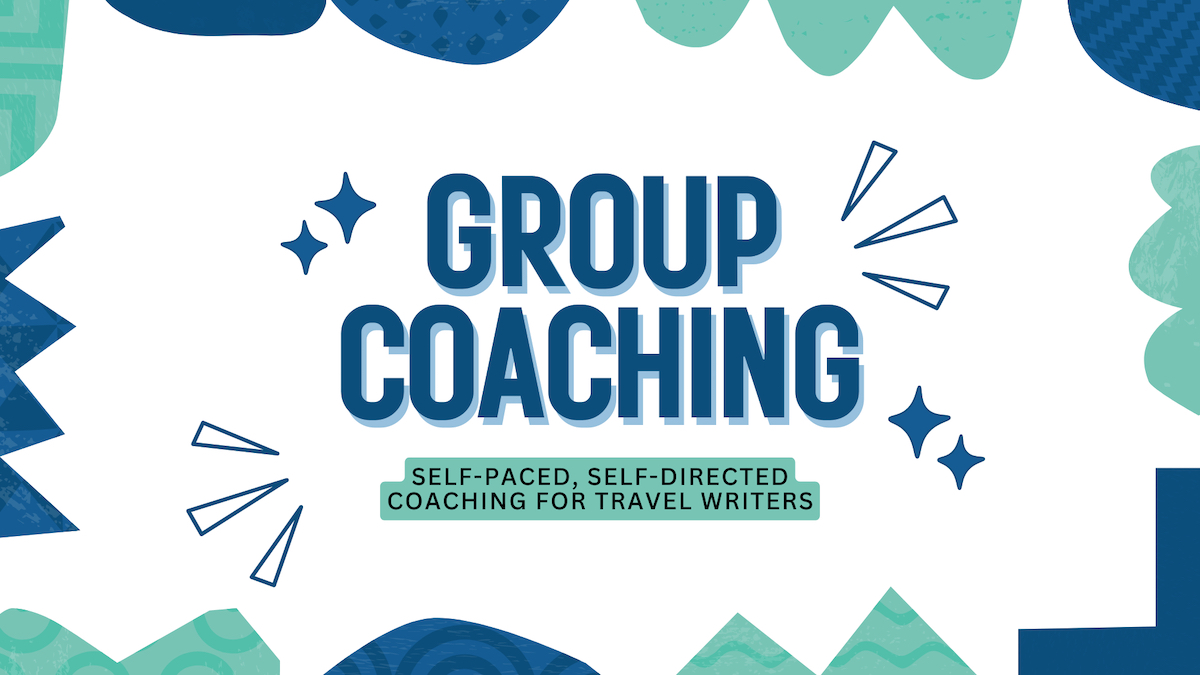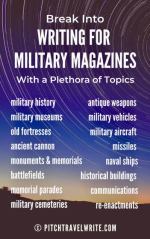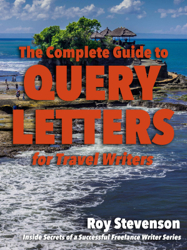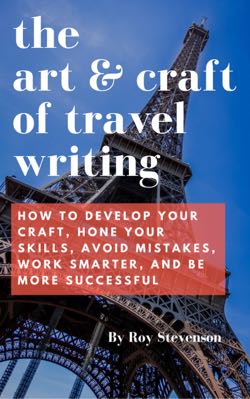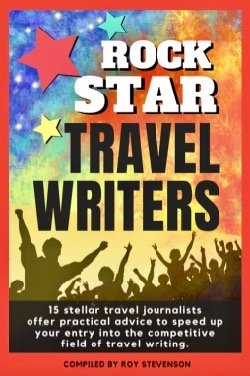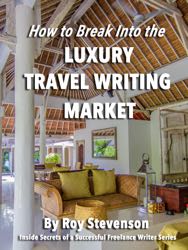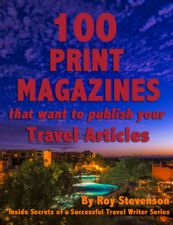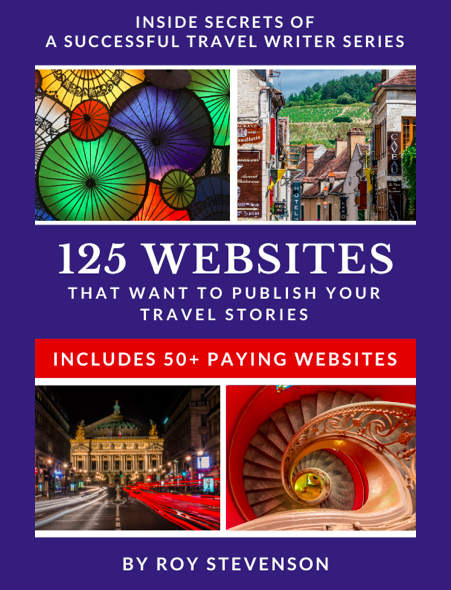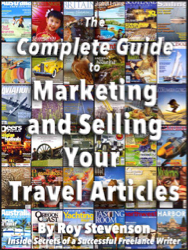- Home
- Getting Published
- How to Get Published and Make Money
How to Get Published
and Make Money
By Roy Stevenson
I started freelance writing in 2007, after attending a three-day travel writing workshop. Before attending the workshop I didn’t know how to get published, or whether I could make money from my writing.
Within three months of starting freelance writing, my stories began appearing on the national magazine racks without interruption.
Since then I’ve had well over 1000 articles published in more than 200 different magazines, newspapers, in-flights, on-boards, trade journals and websites. I have a stack of magazines and newspapers six feet high to prove these claims.
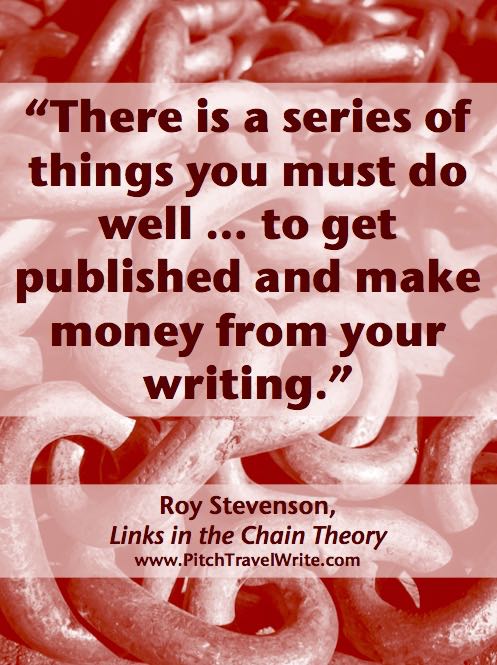
When I pitch a story to an editor, there is a 90% chance that it will get picked up somewhere around the world. I have yet to meet another freelance writer who approaches this. Most freelancers consider themselves lucky if they get 25% of their stories accepted for publication.
I never have less than ten assignments on my desk, and it’s usually far more than that.
What would you, as a freelance writer, think if you pitched several stories and had most of them accepted for publication? Yikes! You’d actually have to sit down and write the articles.
This is the “problem” I face daily. I always have stories to write and deadlines to meet. It’s a problem that most freelance writers would love to have if they want to make money with their writing.
When I talk with aspiring (and even veteran) freelance writers at conferences or on press trips I am inundated with questions about how I achieve this success. Of course most of them expect to hear about my ‘one secret’, or my ‘key’ to the editorial gates of magazines and journals.
The fact is, it’s not just one thing that gives me this high “hit” rate. It’s a system; so explaining it to my colleagues often takes a lot of time. To help make it understandable, I even gave it a name. I call it my Links-in-the-Chain theory of marketing—and I’m going to share it with you in this article.
I believe my high acceptance rate by magazine editors comes from doing a number of things thoroughly rather than just doing one special thing. The system I developed works practically every time using this principle.
There is a series of things you must do to boost your chances of convincing editors that your article will be a good fit in their magazine. And every one of these things must be done well if you want to get published and earn money from your writing.
We all know that if a chain has a weak link, it will break at that link when it is stressed. Likewise, if there is a deficiency in the preparation and presentation of your query, an experienced editor will notice it. Your chances of getting published decrease significantly.
With my system there are six things that must be done well. If you do these things each time you have a story idea, your success rate will improve.
Follow these steps and you will get published more frequently and make money with your writing:
1. Dream up a story idea that sells
2. Research your topic thoroughly
3. Create a query letter that resonates with editors
4. Find publications where you can pitch your idea
5. Deliver a quality article on time
6. Get repeat business with the editor
Most experienced writers reading this will not be surprised at these principles. But my point is, if you neglect any one of the pieces of this chain, your chances of getting published plummet.
Dreaming up a story idea that sells
I am very, very selective about choosing topics to pitch to an editor. I steer away from the mundane and always look for the unexpected. As a travel writer, many tourist agencies send me their current story ideas, and I delete them almost immediately. Every other travel writer will be pitching those stories (which are generally old stuff reheated and served again).
When I visit a place, I look for an angle, or a twist on an old attraction or something completely new. For example, instead of pitching a story about a brewery that is well established and that the magazines have beaten to death, I look for exciting new brews they are experimenting with, or a brewer who uses international recipes.
Every travel editor has been pitched a story about Paris by dewy-eyed tourists, which they promptly delete. Instead, can you find an unusual aspect of Paris that has eluded the media? I pitched a story about the spooky catacombs beneath Paris’s streets that has been published multiple times in print and online media.
Then there are those stories that jump out at you when you visit a place—that rare convergence of juicy subject matter for which you happen to have some solid outlets. Always take the easy ones. You’ll learn to keep your ‘story antennae’ up while you are visiting a place and will quickly be able to accept or dismiss a story idea when you get good at this.

Researching your topic thoroughly
Many writers think that writing a good query letter is what is most important to get published. There are entire books written about query letters. So they concentrate their energies and time on polishing their letter.
But before you write your query letter, it’s important to do some preliminary research on your topic. A “hollow” query letter that neglects to throw in some juicy and interesting facts and figures about the topic, or that fails to paint a picture, even if well written, is not likely to convince the editor that you know the subject. It will likely result in your story being rejected.
Spend a couple of hours or more researching your topic before you compose your query letter. I have sometimes spent a whole day!
I suspect that even experienced writers neglect this crucial step because they are impatient and just want to fire that query out. Doing some preliminary research greatly increases your chances of getting the editors attention and publishing your article.
Using little known, highly interesting information, and hard-to-find statistics in your query letter shows the editor that you’re prepared. Researching your topic also pays off when you get the article accepted—because you’ll already have your rough notes and a paragraph or three to get your story started.
Writing an enticing query letter
A well-researched topic that is poorly presented in a query letter and that does not exhibit good writing skills is likely to get deleted from the editor’s inbox.
In this day of “instant writers”, and with so many other freelancers out there pitching their story ideas, the editor will simply continue on through his inbox to see what other stories are offered. Read a book or two about writing well crafted query letters and create a template for future letters.
I’ve written an eBook complete with query letter samples if you want to see how I write my query letters. I’ve also included explanations for the marketing techniques I used to make each query letter successful.
Do you need help writing query letters that catch the attention of editors?
If you're looking for a guide to help you write query letters to editors, I've written The Complete Guide to Query Letters for Travel Writers to help you. It includes everything you need to know about query letters, along with 20 sample query letters that you can use as templates for your own queries.
Finding publications and building your list
Once you have a good story idea and complete your research, you need to find a good home for your article. A large part of your success as a freelance writer depends on finding a good selection of magazines, newspapers and websites that are compatible with your story ideas.
You create your distribution list by putting all these publications and relevant details onto a spreadsheet or table.
To maximize your distribution list, you’ll need to use several different sources.
It’s always a surprise to hear veteran writers talk about how they find all of their magazine leads in Writer’s Market (a thick tome that lists magazines and newspapers in the U.S. and U.K.). They don’t bother looking anywhere else, and seem to think Writer’s Market has a complete listing of magazines. It doesn’t.
You limit your potential to get published by using only one source of leads. You will get published more frequently if you spend your time doing a more thorough search beyond the Writer's Market.
Don’t get me wrong – Writer’s Market is a good starting point. But if you want to get published more frequently – look farther afield.
Visit newsstands: an excellent source of magazines is the magazine rack at your local bookstore. Check the better-stocked magazine racks in your town.
In particular, visit the specialty magazine stores, or newsagents—they tend to stock the more offbeat publications that are generally more “freelancer friendly” than the big glossies on the supermarket racks.
Do an Internet search: the Internet is the mother lode for tracking down magazines in your genre. It’s amazing what you’ll find when you search for “travel magazines” or “military magazines”, or whatever you’re hunting for.
The Internet has no boundaries—it will hunt down magazines from other countries for you if you search “Travel magazines United Kingdom”, for example. You’ll find more leads than you ever thought possible, and will soon have a sizable distribution list.
Subscribe to magazine databases: These vary in quality and number of magazines listed, but you will find some gems in them all. Some of these websites are paid by subscription only. Spend some time surfing these websites and find two or three that seem like they’ll be a good fit for you.
An in-depth article about finding publications and building your distribution lists is already posted on this website. The link is at the end of this article.
Delivering a quality article on time
Contrary to what most beginning writers believe, excellent writing isn't the most important quality you need to get published.
Editors are looking for writers who will respond instantly, file copy on time, and get the facts right. The last thing you want is an editor tagging you as a high maintenance writer.
The most important thing you can do to get repeat business is to establish a solid relationship with the editor. You do this by submitting your story on time, make sure it’s free of grammar and spelling errors, and has been fact checked.
After you do this once, that editor will be much more receptive to taking more story ideas from you. As long as you continue to deliver quality work, you’ll soon become one of the regulars.
Getting repeat business with the editor
Getting repeat business from an editor saves you a lot of time hunting down new magazines and breaking in new editors. Editors also prefer reliable writers they “know” rather than always working with new writers who haven’t proven themselves.
Most editors have a regular stable of writers they can count on when they're desperate for stories and trying to meet deadlines. Become one of them. Your goal is to get your work published in their magazine as frequently as possible.
Once you have established a solid relationship with the editor, keep pitching new story ideas. You will get published more often when the editor knows you.
I’ve worked these relationships to the hilt. With some editors, I simply send lists of story titles with a sentence or two about the topic—no lengthier query letters needed! This is every freelance writer’s dream.
I’ve even pitched stories that an editor has previously rejected and had them accepted, after I’ve established a rapport with that editor. Developing a solid relationship with your editors is a key to get published more easily and more often.
Final Thoughts to Get Published
Whatever your motivation for wanting to write, you should know it’s never been easier to get published. It’s a numbers game.
Make sure all of the links in your story idea chain are solid before sending that query letter out to the editor and your chances of getting that story into print will be strong.
Develop an ongoing relationship with your editors and you will get published more frequently and make more money with your writing.
Break into Travel Writing
with the Creative Pack
The Creative Pack includes 3 eBooks that are the starting point for every travel writer: dreaming up unique story ideas that you can sell, finding the best writing niches for you based on your interests, passions and experience, and the art & craft of travel writing. They’re the pieces of the puzzle that come before you ever write a query letter to sell your articles to magazine editors.
If you're just getting started in travel writing, this group of resources will help you improve your craft, generate story ideas that sell, and develop your own unique and meaningful niche.
These eBooks can be purchased separately, but when you buy the bundle you'll save more than 10% off individual prices! Learn more here ...
More related articles . . .
Getting Published: The Many Ways to Sell Your Travel Articles
Five Ways to Sell Articles More Successfully
How to Build Distribution Lists to Sell Your Travel Stories

Roy Stevenson is a professional travel writer and the author of www.PitchTravelWrite.com. Over the past ten years, he’s had more than 1000 articles published in 200 magazines, trade and specialty journals, in-flights, on-boards, blogs and websites and has traveled on assignment around the U.S. and to dozens of international destinations.
IF YOU ENJOYED THIS POST, GET UPDATES. IT'S FREE.

